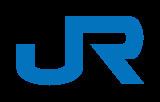Native name 西日本旅客鉄道株式会社 Founded 1 April 1987 | Revenue 1.299 trillion JPY (2013) | |
 | ||
Traded as TYO: 9021OSE: 9021NSE: 9021FSE: 9021 Area served Kansai regionChugoku regionHokuriku regionShin'etsu region Stock price 9021 (TYO) JP¥ 7,241 -152.00 (-2.06%)31 Mar, 3:00 PM GMT+9 - Disclaimer CEO Tatsuo Kijima (22 Jun 2016–) | ||
West japan railway gave taxi ride to passengers halted by storm
West Japan Railway Company (西日本旅客鉄道株式会社, Nishi-Nihon Ryokaku Tetsudō Kabushiki-gaisha), also referred to as JR-West (JR西日本, Jeiāru Nishi-Nihon), is one of the Japan Railways Group (JR Group) companies and operates in western Honshu. It has its headquarters in Kita-ku, Osaka.
Contents
- West japan railway gave taxi ride to passengers halted by storm
- West japan railway company amarube station arrival of diesel train
- Shinkansen
- Urban Network
- Intercity and regional lines
- Intercity lines
- Regional lines
- Other businesses
- History
- References
West japan railway company amarube station arrival of diesel train
Shinkansen
JR-West's highest-grossing line is the Sanyo Shinkansen high-speed rail line between Osaka and Fukuoka. The Sanyo Shinkansen alone accounts for about 40% of JR-West's passenger revenues. The company also operates Hakata Minami Line, a short commuter line with Shinkansen trains in Fukuoka.
Urban Network
The "Urban Network" is JR-West's name for its commuter rail lines in the Osaka-Kobe-Kyoto metropolitan area. These lines together comprise 610 km of track, have 245 stations and account for about 40% of JR West's passenger revenues. Urban Network stations are equipped to handle ICOCA fare cards. Train control on these lines is highly automated, and during peak hours trains run as often as every two minutes.
JR-West's Urban Network competes with a number of private commuter rail operators around Osaka, the "Big 4" being Hankyu Railway/Hanshin Railway (Hankyu bought Hanshin in 2005), Keihan Railway, Kintetsu, and Nankai Railway. JR-West's market share in the region is roughly equal to that of the Big 4 put together, largely due to its comprehensive network and high-speed commuter trains (Special Rapid Service trains on the Kobe and Kyoto lines operate at up to 130 km/h).
Those in italics are announcement names.
Intercity and regional lines
A number of other lines account for more than half of JR-West's track mileage. These lines mainly handle business and leisure travel between smaller cities and rural areas in western Japan. They account for about 20% of the company's passenger revenues.
Intercity lines
Regional lines
Other businesses
JR-West subsidiaries include the following.
History
JR-West was incorporated as a business corporation (kabushiki kaisha) on April 1, 1987 as part of the breakup of government-owned Japanese National Railways (JNR). Initially, it was a wholly owned subsidiary of the JNR Settlement Corporation (JNRSC), a special company created to hold the assets of the former JNR while they were shuffled among the new JR companies.
For the first four years of its existence, JR-West leased its highest-revenue line, the Sanyō Shinkansen, from the separate Shinkansen Holding Corporation. JR-West purchased the line in October 1991 at a cost of 974.1 billion JPY (about US$7.2 billion) in long-term payable debt.
JNRSC sold 68.3% of JR-West in an initial public offering on the Tokyo Stock Exchange in October 1996. After JNRSC was dissolved in October 1998, its shares of JR-West were transferred to the government-owned Japan Railway Construction Public Corporation (JRCC), which merged into the Japan Railway Construction, Transport and Technology Agency (JRTT) as part of a bureaucratic reform package in October 2003. JRTT offered all of its shares in JR-West to the public in an international IPO in 2004, ending the era of government ownership of JR-West. JR-West is now listed on the Tokyo Stock Exchange, Nagoya Stock Exchange, Osaka Securities Exchange and the Fukuoka Stock Exchange.
